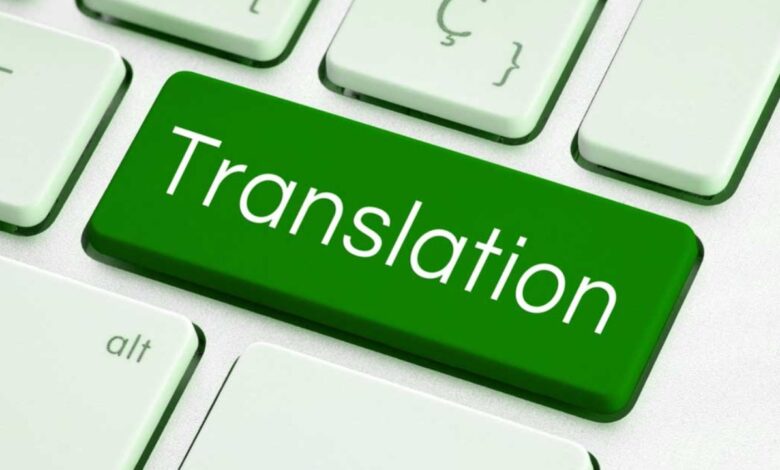Improve CX with IT and Telecoms Translation Services

In today’s hyper-connected world, your customers could be anywhere. Whether they’re using your cloud platform in Germany or troubleshooting their SIM in Japan, one thing remains constant they expect clear, native-language support. That’s where IT and Telecoms Translation Services come in.
Done right, translation can significantly improve the customer experience (CX). And in IT and telecoms, where users rely on real-time services, accurate communication makes or breaks customer trust.
Let’s explore how partnering with a professional translation services company can help tech and telecom firms deliver seamless CX worldwide.
Why CX Is Crucial for IT and Telecoms
Customer experience is not just about good design or fast support. It’s about how users feel when interacting with your brand. In IT and telecoms, that experience depends heavily on language.
Think about it:
- A software dashboard in poor English can confuse users.
- A telecom help page with mistranslations may frustrate non-English speakers.
- An AI chatbot that fails to understand local idioms can damage credibility.
According to Zendesk’s 2023 CX Trends Report, 70% of customers expect brands to offer support in their native language. And CSA Research found that 76% of consumers are more likely to buy again when customer care is offered in their language.
Good translation isn’t just a luxury, it’s a growth tool.
What Are IT and Telecoms Translation Services?
These are specialized translation solutions tailored to the needs of tech and telecom brands. They cover:
- Software UI and UX content
- Help desk articles and knowledge bases
- Call center scripts
- Billing systems and invoices
- User manuals and onboarding documents
- Network operation guides
- App store content and release notes
- Legal and compliance documents
Unlike generic translation, IT and Telecoms Translation Services require linguistic accuracy and deep technical knowledge. Miscommunication in this sector can lead to service downtime, legal risks, or user churn.
That’s why leading brands work with a professional translation services company that specializes in this domain.
Real-World Example: How Cisco Transformed CX in Japan
Cisco, a global IT leader, once faced high support call volumes in Japan due to poorly localized self-service portals. Many users couldn’t navigate the help centre because translations were inconsistent.
The company worked with a specialist translation provider to revamp all user-facing content in Japanese—software UI, help articles, and troubleshooting flows. Within three months, Cisco saw a 22% drop in support tickets and a marked increase in positive CSAT scores from Japanese customers.
That’s the power of proper localization in tech.
How Translation Services Improve CX in IT and Telecom
1. Clearer Product Interfaces
Whether it’s a cloud dashboard, billing portal, or mobile app, tech products often come with dense interfaces. When translated correctly, the UI becomes user-friendly—across all markets.
A professional translation services company ensures that your interface feels native to every user, improving usability and reducing frustration.
2. Better Customer Support
Help desk articles, live chat scripts, and chatbot workflows need to be accurate and culturally appropriate. IT users often search for solutions independently. If the support content isn’t in their language, they’re more likely to leave.
According to HubSpot, 90% of customers rate an “immediate” response as important when they have a customer service question. Fast answers only work if they’re understandable.
3. Localized Voice and Chat Experiences
In telecoms, contact centers play a major role in CX. Poorly translated scripts or machine-generated responses create confusion and dissatisfaction.
Using IT and Telecoms Translation Services, companies can localize scripts for human agents and optimize chatbot flows for multilingual audiences.
Case Study: Vodafone localized its contact center operations across 11 European languages, reducing average handling time by 18% and improving customer retention.
4. Better Onboarding and Training
Complex IT tools often need tutorials, manuals, or onboarding sequences. Translating these not only improves the learning curve but reduces support costs.
For example, Asana translated its onboarding experience into multiple languages when expanding into Europe. The result? A 30% increase in trial-to-paid conversions in non-English-speaking markets.
Why You Need a Professional Translation Services Company
You might think using machine translation or in-house bilingual staff will do the job. But in technical fields, accuracy, terminology, and consistency matter more than speed or low cost.
A professional agency brings:
- Subject matter expertise (in telecoms, cloud, AI, etc.)
- Terminology management to ensure consistency
- QA processes for accuracy
- Localization engineering for software and mobile apps
- Scalability to support large rollouts across markets
This expertise helps maintain brand voice while adapting content to each market’s language and culture.
Key Takeaways for Tech and Telecom Leaders
- Great customer experience requires language accessibility.
- IT and Telecoms Translation Services improve product usability, reduce support issues, and build global trust.
- Companies like Cisco and Vodafone have proven that translation drives results.
- A professional translation services company ensures quality and scalability.
- Don’t let poor localization block your global growth.
Final Thoughts
Your product might be cutting-edge. Your service might be reliable. But if your customers can’t understand you, they won’t stay.
Investing in IT and Telecoms Translation Services is not just about ticking a box—it’s a strategic move to improve CX, build loyalty, and grow globally. Work with a professional translation services company that understands your sector, and you’ll see the results in your bottom line.



